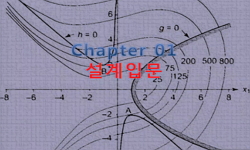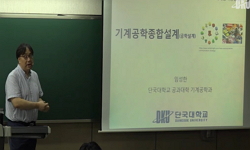Optimality Theory(Correspondence Theory) gives a full illustration to universal and individual linguistic features through distinctive rankings of universal and violable in different languages. Such a Optimality Theory can represent the Standard Chine...
http://chineseinput.net/에서 pinyin(병음)방식으로 중국어를 변환할 수 있습니다.
변환된 중국어를 복사하여 사용하시면 됩니다.
- 中文 을 입력하시려면 zhongwen을 입력하시고 space를누르시면됩니다.
- 北京 을 입력하시려면 beijing을 입력하시고 space를 누르시면 됩니다.
https://www.riss.kr/link?id=A76266248
- 저자
- 발행기관
- 학술지명
- 권호사항
-
발행연도
2008
-
작성언어
Korean
-
주제어
Optimality Theory ; English Loanword ; Standard Chinese ; Correspondence Theory ; Phonotactic ; Constraint ; Ranking ; C< ; SUB> ; ODA< ; /SUB> ; C< ; SUB> ; ONDITION< ; /SUB> ; *C< ; SUB> ; OMPLEX< ; /SUB> ; 》I< ; SUB> ; DENT< ; /SUB> ; -IO(rel)》M< ; SUB> ; AX< ; /SUB> ; -IO》 D< ; SUB> ; EP< ; /SUB> ; -IO
-
등재정보
KCI등재
-
자료형태
학술저널
-
수록면
93-113(21쪽)
-
KCI 피인용횟수
4
- 제공처
-
0
상세조회 -
0
다운로드
부가정보
다국어 초록 (Multilingual Abstract)
This article successfully analyzed the ranking of constraints for syllabification of plosives of the loanwords within the framework of Optimality Theory. And IDENT-IO(rel) that I supposed is also a direct reflection of the principle of faithfulness in that the constraint chooses a right candidate as a optimal output which is realized vowel epenthesis or consonant deletion. After all, I suggest the following hierarchy; CODA CONDITION, *COMPLEX 》 IDENT-IO(rel)》MAX-IO》 DEP-IO in syllabification of the loanwords.
Optimality Theory(Correspondence Theory) gives a full illustration to universal and individual linguistic features through distinctive rankings of universal and violable in different languages. Such a Optimality Theory can represent the Standard Chinese phonological structure of loanwords through a series of hierarchically ranked constraints which make them phonologically harmonic with the Standard Chinese.
This article successfully analyzed the ranking of constraints for syllabification of plosives of the loanwords within the framework of Optimality Theory. And IDENT-IO(rel) that I supposed is also a direct reflection of the principle of faithfulness in that the constraint chooses a right candidate as a optimal output which is realized vowel epenthesis or consonant deletion. After all, I suggest the following hierarchy; CODA CONDITION, *COMPLEX 》 IDENT-IO(rel)》MAX-IO》 DEP-IO in syllabification of the loanwords.
목차 (Table of Contents)
- 1. 서론
- 2. 본고의 이론적 배경
- 3. 본고의 분석
- 4. 결론
- 〈參考文獻〉
- 1. 서론
- 2. 본고의 이론적 배경
- 3. 본고의 분석
- 4. 결론
- 〈參考文獻〉
- 〈ABSTRACT〉
참고문헌 (Reference)
1 손경옥, "현대중국어의 외래어 연구" 12 : 77-94, 1997
2 정 진취앤, "현대중국어 생성음운론" 학고방 2002
3 강옥미, "한국어 차용어 음운론에 대한 최적정이론 분석" 28 : 113-160, 1996
4 端木三, "표준중국어음운론" 한국문화사 2003
5 김선아, "표준 중국어의 외국 어휘 수용 연구" 이화여자대학교 1999
6 고병암, "최적이론-음운·형태론을 중심으로-" 동인 1998
7 John J. McCarthy, "최적성이론의 주제별 안내" 한국문화사 2003
8 Diana Archangeli, "최적성이론" 한신문화사 1999
9 안상철, "최적성 이론의 언어분석" 한국문화사 2003
10 김선철, "차용어 형성의 음운론적 과정에 대한 한 검토(1)-영어 차용론을 중심으로" 250 : 127-128, 2000
1 손경옥, "현대중국어의 외래어 연구" 12 : 77-94, 1997
2 정 진취앤, "현대중국어 생성음운론" 학고방 2002
3 강옥미, "한국어 차용어 음운론에 대한 최적정이론 분석" 28 : 113-160, 1996
4 端木三, "표준중국어음운론" 한국문화사 2003
5 김선아, "표준 중국어의 외국 어휘 수용 연구" 이화여자대학교 1999
6 고병암, "최적이론-음운·형태론을 중심으로-" 동인 1998
7 John J. McCarthy, "최적성이론의 주제별 안내" 한국문화사 2003
8 Diana Archangeli, "최적성이론" 한신문화사 1999
9 안상철, "최적성 이론의 언어분석" 한국문화사 2003
10 김선철, "차용어 형성의 음운론적 과정에 대한 한 검토(1)-영어 차용론을 중심으로" 250 : 127-128, 2000
11 林燾, "중국어 음성학" 교육과학사 1999
12 노동선, "중국어 속의 외래어 연구" 한국외국어대학교 1973
13 김정아, "유·무성 중화 및 동화의 기능 음운론적 분석" 연세대학교 2003
14 홍인표, "서구화에 따른 중국에서의 외래어 표기" 19 : 151-165, 1991
15 郭鴻杰, "英語對現代漢語的影響-語言認知硏究法" 上海交通大學出版社 2005
16 中國社會科學院言語硏究所詞典編輯室, "現代漢語詞典" 商務印書館 1996
17 맹주억, "現代中國語의 外來新語 小考" 1 : 73-102, 1984
18 熊文華, "漢語和英語中的借詞 in 詞彙文字硏究與對外漢語敎學" 北京語言文化大學出版社 1997
19 高燕, "汉语外来词的名與实探析" 5 : 2004
20 王吉輝, "字母詞語的外來詞語性質分析" 5 : 36-41, 1999
21 颜红菊, "外来词的借入方式和汉化方式——兼论外来词的分类" 3 : 2003
22 馬秋武, "北京話兒化的優選論分析" 26 (26): 143-151, 2003
23 鍾榮富, "優選論與漢語的音系" 3 : 1-14, 1995
24 張吉生, "優選論與汉语外来语的音节可接受性" 26 (26): 7-12, 2003
25 王嘉齡, "優選論與工能主義" 34 (34): 30-34, 2002
26 俆學萍, "优选论與汉语重叠词的声调变化" 4 (4): 79-85, 2003
27 宮齊, "优选论及其在汉语音系研究中的应用" 25 (25): 88-95, 2003
28 Prince, A., "Optimality Theory: Constraint Interaction in Generative Grammar, Technical Report #2 of the Rutgers Center for Cognitive Science" Rutgers University 1993
29 Kager, R., "Optimality Theory" Cambridge University Press 1999
30 Silverman, D., "Multiple Scansions in Loanword Phonology: Evidence from Cantonese" 9 : 289-328, 1992
31 "Merriam Webster’s Collegiate Dictionary, 10th ed"
32 "Longman Dictionary of Contemporary, New edition"
33 Lee, Ponghyung, "Korean Loanword Phonology: An Optimality Perspective" 20 : 121-152, 1995
34 McCarthy, J. J., "Generalized Alignment" University of Massachusetts 1993
35 McCarthy, J. J., "Faithfulness and Reduplicative Identity in Papers in Optimality Theory" GLSA 249-384, 1995
36 "English Pronouncing Dictionary, 14th edition"
37 Yip, Moira, "Cantonese Loanword Phonology and Optimality" 2 : 261-291, 1993
동일학술지(권/호) 다른 논문
-
- 중국어문학연구회
- 趙寬熙(Cho Kwan-hee)
- 2008
- KCI등재
-
- 중국어문학연구회
- 張永伯(Chang Youung-bak)
- 2008
- KCI등재
-
- 중국어문학연구회
- 嚴翼相(Eom Ik-sang)
- 2008
- KCI등재
-
- 중국어문학연구회
- 韓學重(Han Hak-jung)
- 2008
- KCI등재
분석정보
인용정보 인용지수 설명보기
학술지 이력
| 연월일 | 이력구분 | 이력상세 | 등재구분 |
|---|---|---|---|
| 2026 | 평가예정 | 재인증평가 신청대상 (재인증) | |
| 2020-01-01 | 평가 | 등재학술지 유지 (재인증) |  |
| 2017-01-01 | 평가 | 등재학술지 유지 (계속평가) |  |
| 2013-01-01 | 평가 | 등재학술지 유지 (등재유지) |  |
| 2010-01-01 | 평가 | 등재학술지 유지 (등재유지) |  |
| 2008-01-01 | 평가 | 등재학술지 유지 (등재유지) |  |
| 2006-01-01 | 평가 | 등재학술지 유지 (등재유지) |  |
| 2003-01-01 | 평가 | 등재학술지 선정 (등재후보2차) |  |
| 2000-01-01 | 평가 | 등재후보학술지 선정 (신규평가) |  |
학술지 인용정보
| 기준연도 | WOS-KCI 통합IF(2년) | KCIF(2년) | KCIF(3년) |
|---|---|---|---|
| 2016 | 0.24 | 0.24 | 0.21 |
| KCIF(4년) | KCIF(5년) | 중심성지수(3년) | 즉시성지수 |
| 0.19 | 0.19 | 0.477 | 0.12 |




 KCI
KCI DBpia
DBpia





